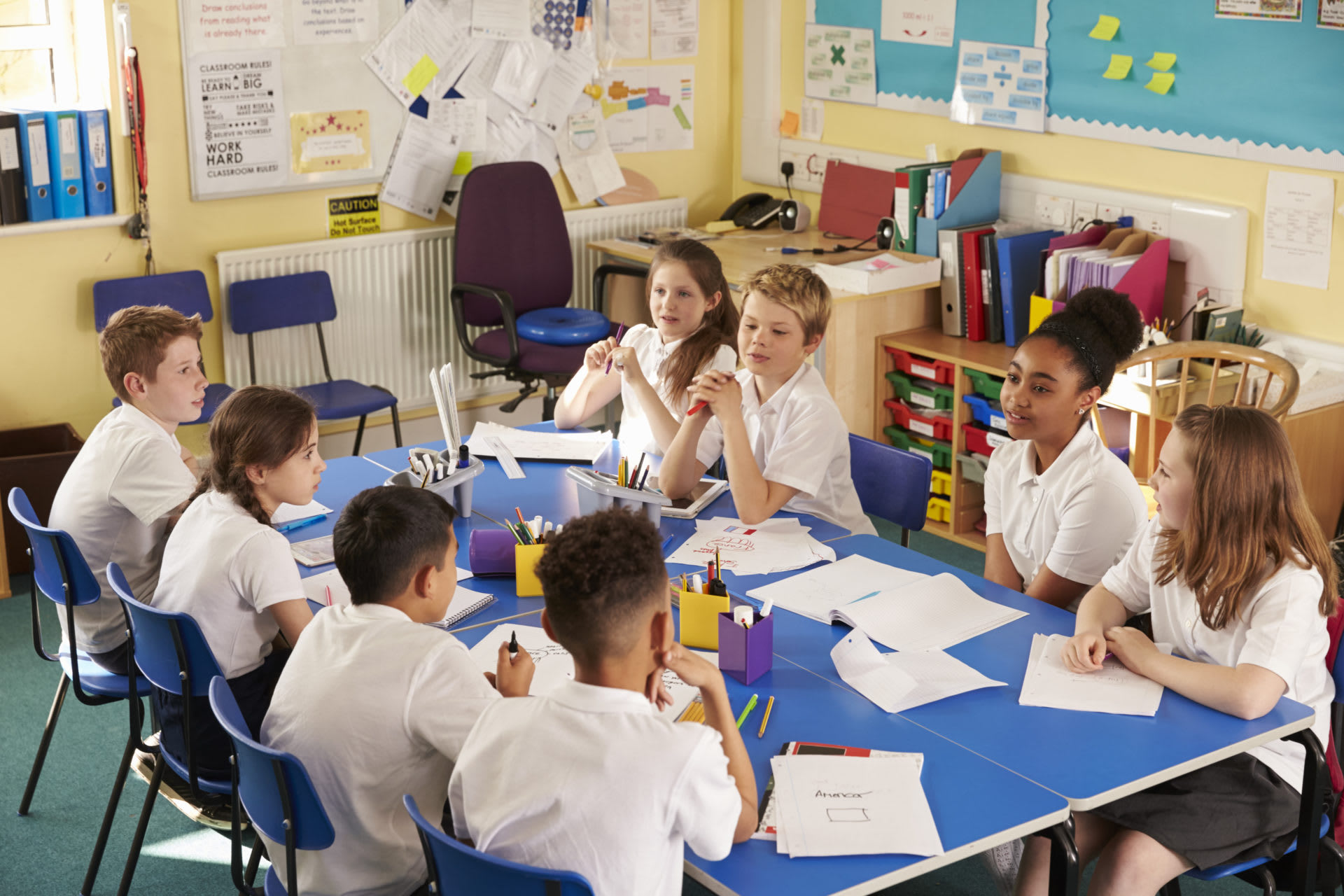If you’re looking to refresh classroom discussions with more creative thinking, incorporating brainstorming activities for students can help them develop ideas and come up with solutions. Added time for brainstorming gives students a chance to create connections and context between what they already know and the topic they’re currently learning. Perhaps more importantly, creating a space for students to practice respectfully listening to and building upon others’ ideas is a life skill that will carry them through life.
How to Start
While students can find freedom in the loose structure of a brainstorming session, implementing a few rules will help keep chaos at bay:
Give them space, but keep them focused. Make sure the prompt you provide is clear, simple, and open-ended – the goal is to generate the most responses possible. Give your students room to imagine, and come up with a few questions to get them re-focused if the discussion gets off track.
There are no winners or losers. This is a judgment-free zone – encourage students to listen quietly and respectfully as their peers present their ideas. No suggestions are better or worse than the others; the goal is to get as many things on the board as possible in the allotted time.
Set a time limit. Keep it short! While you may need more time for more complex topics, try to get them thinking quickly without challenging the adequacy of their individual ideas. Each student should try to suggest at least one idea before time runs out – encourage them to speak up and contribute.
Review together. Make sure everybody can see and read each of the ideas listed, and restate the prompting question. Work through the ideas one by one and have the students explain what they think about each one and why. Most of the ideas listed might not be useful – spend time working out a solution or response to the prompt that they think would work best.
Three Brainstorming Methods
Each class has a different personality, and sometimes you will have to adjust your methods to get them brainstorming as effectively as possible. Here are different ways to approach brainstorming – experiment with them and use the one that works best for your class!
Simple Brainstorming: This is what you probably imagine first when you picture a brainstorming session. Write down the question or prompt on the board and have students respond, documenting every suggestion they have.
Card Method: Each student begins by writing their idea on a card. Once they’re done, they will pass the card to their right and read the idea on the card they received. They’ll write a suggestion building on the idea and pass the card to their right again; if a student doesn’t have anything to add, they can write a question for discussion instead. The process should end when they receive their original card and the teacher will share each idea with the group. Experimenting with different variations of brainstorming activities for students can lead to your classroom becoming a more collaborative, positive, and creative space. Brainstorming is a great way to teach students how to interact respectfully with their peers – a skill that, once learned, will stay with them for life.
Group Brainstorming” One downside to simple brainstorming is how easy it is for your class to fall into groupthink. Group brainstorming can help solve that problem by breaking the class into small teams that each brainstorm together before presenting their ideas to the group. If you find groupthink is still affecting your class, check out this variation on group brainstorming by a former middle school teacher and current college professor John Spencer:
Brainstorming Resources for Independent Practice:
Students will likely need more practice in brainstorming after this lesson. Try following up with these free EVERFI independent lessons.
Vault: Understanding Money: (3rd-6th) Students understand and practice how to set and meet goals, along with making sound decisions. Empower students to know how to problem-solve creatively in a fun scenario-based simulation.
Endeavor STEM Career Exploration: (6th-10th grade) Your students will test their outside-the-box thinking skills in a variety of STEM focused career games like experimenting 3D printer material options while calibrating printer settings or by exploring collaborative and content-based filtering techniques to build the perfect musical playlist.
Keys To Your Future: College and Career Planning:(9th-12th grade) These lessons will help your students brainstorm goals related to their future and realize the steps they need to take in order to achieve them. It will prepare them for a variety of post-secondary options and the soft skills needed for the workforce, offering them various pathways, regardless of cultural or economic background.
Make sure you set up your free teacher account or fill out an interest form depending on which resource you would like to use with your students.

Vanessa Baioni is a recent college graduate and a member of the K-12 Marketing team. In her spare time, Vanessa enjoys writing and photography.

